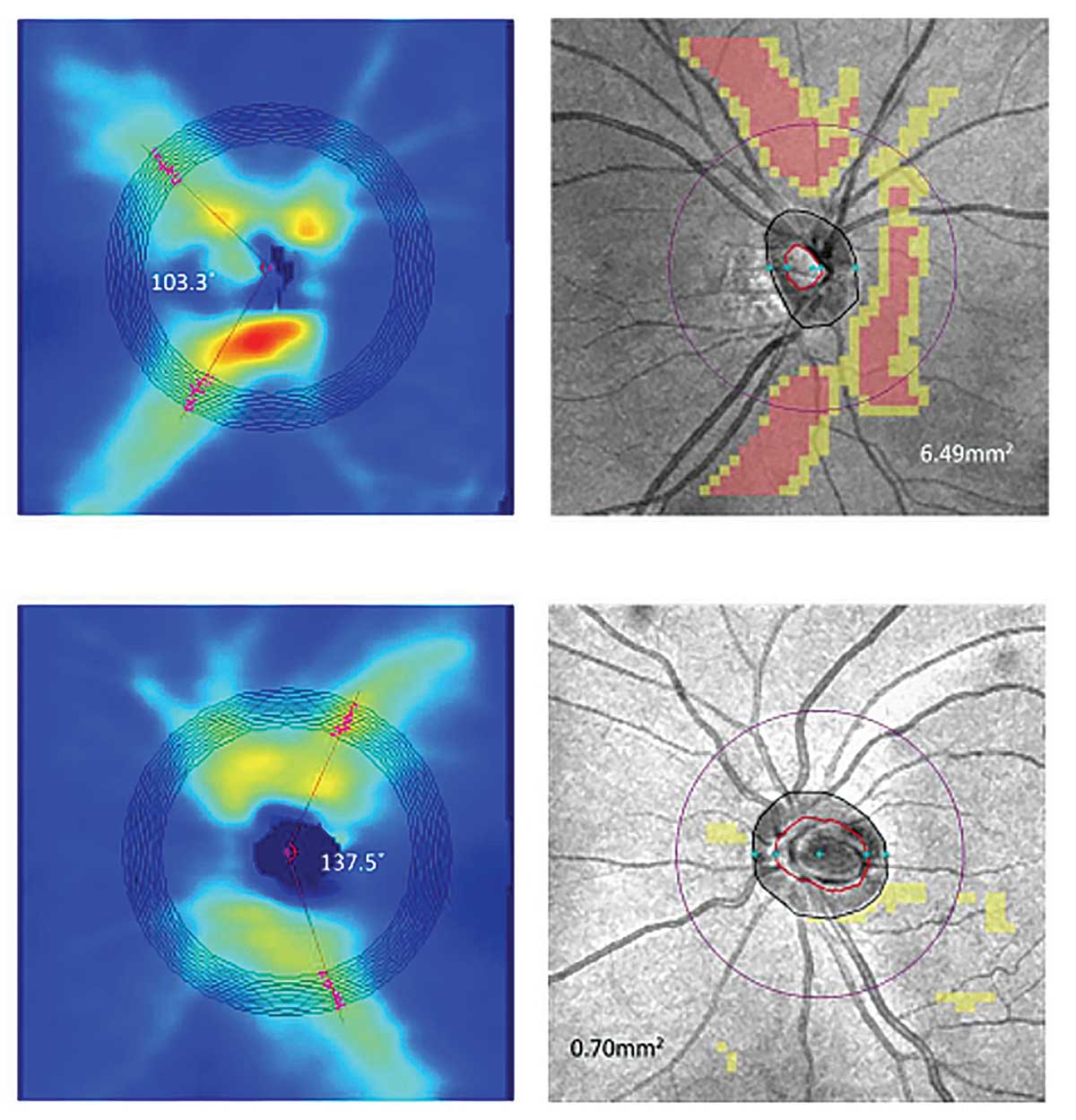 |
This new classification system for myopic patients may help identify those with glaucomatous damage or progression. Photo: Andrew Rouse, Lauren Sabol, Tej Ramdass, Anupam Laul, OD, and Richard Madonna, OD. Click image to enlarge. |
A new classification system for visual field abnormalities in non-pathologic high myopia will help researchers communicate and compare findings, authors of a recent study reported. The classification system (developed from 1,893 visual field tests of 1,302 eyes) includes four major VF patterns: normal, glaucoma-like defects, high myopia-related defects and combined defects, accounting for 74.1%, 10.8%, 15% and 0.1% of all visual field defects, respectively.
Glaucoma-like and high myopia-related defects were associated with older age and longer axial length, the researchers reported. They noted that longer axial length had a stronger effect on prevalence of glaucoma-like visual field defects than high myopia-related visual field defects.
“This system provides a tool for clinicians to distinguish glaucomatous visual field loss from non-glaucomatous visual field defects in highly myopic eyes in their clinical practice and also may facilitate comparison of findings among clinical trials and epidemiological studies,” the authors concluded in their paper.
Lin F, Chen S, Song Y, et al. Classification of visual field abnormalities in highly myopic eyes without pathological change. Ophthalmology. March 11, 2022. [Epub ahead of print]. |

